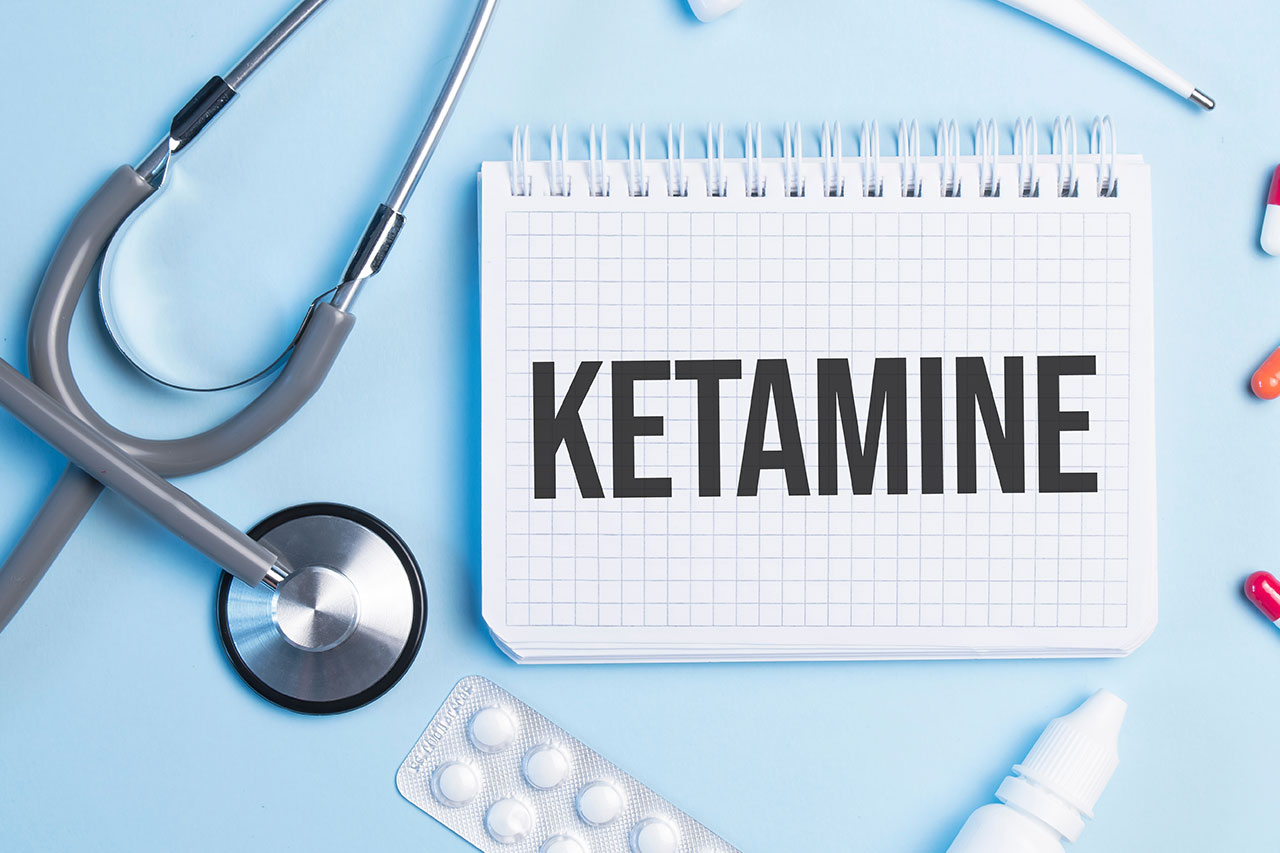For decades, the world of psychiatry has explored the therapeutic potential of psychedelics. From the use of LSD in the 1950s and 60s to recent research on psilocybin, there’s been a renewed interest in the therapeutic potential substances that alter our perception. Among this growing list of substances is ketamine— a substance that has received significant attention in recent years for its rapid antidepressant effects.
Ketamine was first synthesized in the 1960s as an anesthetic agent. It was widely used in veterinary and human medicine for its rapid onset and short duration of action. Over time, its recreational use and association with dissociative effects led to controversy. However, its potential as an antidepressant has led to a resurgence in interest, especially in therapeutic settings for folks seeking support with treatment-resistant depression.
How Does Ketamine Assisted Therapy Work?
Ketamine assisted therapy is not just about the drug itself but involves a combination of the drug’s pharmacological effects with psychotherapy. Derived from its roots as an anesthetic, ketamine has a profound impact on the NMDA receptors in the brain, which plays a crucial role in its therapeutic effects. Ketamine can induce a dissociative state, providing a unique opportunity for introspection and therapeutic intervention. This state can be described as a “third-personing” of self, where individuals can objectively analyze their emotions and thoughts. Such a perspective can help patients confront, process, and integrate traumatic or deeply embedded negative beliefs, often in a more rapid fashion than traditional therapy alone. Moreover, the release of brain-derived neurotrophic factor (BDNF) triggered by ketamine has been linked to its potential in rewiring brain circuits, making the therapy even more potent. However, it’s also crucial to note that the effects can vary, and while some might experience rapid relief, others might need multiple sessions to witness substantial change.
What’s Actually Happening at the Neural Level?
Ketamine, has a unique mode of action in the brain. Its primary mechanism is the blockade of the NMDA receptor. This might sound complex, but imagine the NMDA receptor as a gate. When ketamine is present, it effectively “blocks” this gate, leading to a surge in the release of a neurotransmitter called glutamate. Think of glutamate as a messenger molecule that helps brain cells communicate.
This glutamate overflow then activates another set of receptors, called AMPA receptors. Now, here’s where things get really fascinating. The activation of these AMPA receptors leads to a cascade of events that ultimately increases the production of Brain Derived Neurotrophic Factor (BDNF). BDNF might sound like a mouthful, but it’s essentially a protein that acts like a fertilizer for the brain. It plays a pivotal role in neuroplasticity, which is the brain’s remarkable ability to adapt, change, and reorganize by forming new neural connections. In essence, neuroplasticity allows neurons (brain cells) to compensate for injury or changes in their environment and to adjust their activities in response to new situations or changes in their surroundings.
Although this may already seem complex enough, the depths of ketamine’s effects don’t end there. It also interacts with the opioid receptor system. While the NMDA blockade and BDNF production are well-understood aspects of its rapid antidepressant effects, the interactions with the opioid system are less studied but are thought to play a potential role in the mood-lifting properties of ketamine.
In simpler terms, ketamine not only offers a short-term mood lift but also nurtures the brain to adapt and heal in the long run.
The Therapeutic Process (Integration of Psychotherapy)


The true power of ketamine-assisted therapy lies in the combination of the drug’s effects with the therapeutic process. As patients experience the altered state of consciousness induced by ketamine, therapists can guide them through their experiences. Post-session, therapists help patients make sense of their experiences and implement positive changes in their daily lives.
Another type of therapy accessible now to folks in Puerto Rico is over-the-counter medication with online support. Nue Life has pioneered an innovative approach to this transformative therapy by facilitating it right at home. Recognizing the comfort, privacy, and security your own space provides, Nue Life offers at-home ketamine treatments in the form of self-administered tablets with complimentary online therapeutic support. This approach ensures that clients not only have the benefits of a controlled, familiar environment but also constant access to qualified therapists who can help navigate the profound journeys that ketamine can induce. With this blend of medical innovation and digital interaction, Nue Life is revolutionizing the way we approach mental well-being, making impactful therapy accessible, and seamlessly integrated into daily life.
Though Ketamine is legal in Puerto Rico, strictly for medical use, it’s not widely adopted. Yet. There are many Ketamine infusion and assisted therapy clinics in mainland US, and we at Pravan Foundation are working diligently to make this treatment more accessible and mainstream on the island. Understanding the transformative potential of ketamine-assisted therapy, at Pravan Foundation we aim to bridge the gap between cutting-edge mental health treatments available stateside and the needs of Puerto Rico’s residents. Through education, partnerships, and advocacy, we are striving to ensure that the people of Puerto Rico have the same opportunities for mental wellness and healing as those on the mainland.
But how many sessions are typically required?
A typical course of ketamine therapy for depression often involves multiple sessions spread out over several weeks. The goal is not just immediate relief but also to instigate “durable changes” in the brain. Neuroplasticity, the brain’s ability to form new neural connections, becomes particularly significant here. The frequent sessions aim to harness and enhance this natural capacity, allowing the brain to rewire itself in more positive, adaptive ways.
The true challenge often lies in the everyday – in integrating these insights and experiences into one’s daily life. With the assistance of therapists, patients are encouraged to engage in anti-depressive behaviors, reinforcing the positive neural changes initiated by the ketamine. This might look like adopting healthier habits, challenging negative thought patterns, or seeking out supportive community connections. These behavioral changes, strengthened by the connective rewiring of neuroplasticity, ensure that the benefits of ketamine therapy extend and sustain beyond the therapy room.
We at the Pravan Foundation recognize the importance of ongoing self-care and holistic health practices. For this reason, we’re excited to announce the upcoming launch of a weekly series called “Love Yourself.” This series of articles, available exclusively on our website, focuses on many dimensions of self-care, guiding you on a transformative journey. From mindfulness, empowering movement, science of nutrition and the insights from cognitive-behavioral techniques, in every carefully curated installment we seek to uplift and enlighten. The series will also explore lifestyle choices that nurture the soul and various therapeutic modalities that boost well-being.
Potential Benefits of this Therapy
Numerous clinical trials have indicated that ketamine can provide rapid and sustained relief from depression, even in individuals who have been resistant to other treatments. Its ability to induce neuroplasticity might offer a chance to “reset” certain neural pathways associated with mental health disorders. Beyond depression, there’s interest in its potential for conditions like PTSD and anxiety disorders.
Safety Concerns and Potential Side Effects


Ketamine, like any other drug, comes with its set of potential risks and rewards. While its antidepressant effects and potential in therapy are significant, it’s crucial to approach its use with informed caution.
Mild side effects can include dizziness, nausea, or even euphoria. On the more severe end of the spectrum, the dissociative effects that ketamine is known for, although therapeutically beneficial for many, can be profoundly distressing for others. These experiences might manifest as feelings of “3rd personing of the self” or a detachment from one’s surroundings or identity. It’s important to note that while some of these distressing effects last only during the influence of the ketamine, proper preparation and guidance during the treatment process can help mitigate them.
It’s important to emphasize the significance of dosage. At therapeutic dosages, these side effects are less prominent, however at higher dosages, ketamine can induce full-blown anesthesia, risk of seizures and increases in blood pressure. It’s also worth noting that people’s dosage sensitivity varies greatly, meaning that what might be a ‘safe’ dose for one might be excessive for another.
Ketamine, unlike substances such as cigarettes or opioids, is not physically addictive. However, like other substances with psychoactive effects, there is a potential for some individuals to form a habit or use it as a psychological crutch. This underlines the importance of its administration under the guidance of trained professionals. Engaging with knowledgeable and certified practitioners ensures the therapy is conducted safely, maximizing benefits and minimizing risks.
The Future of Ketamine Assisted Therapy
As research continues, it’s essential to approach these treatments with a balanced perspective, understanding both their transformative potential and inherent risks. The holistic integration of substances like ketamine with psychotherapeutic techniques with professionals in mental health and wellbeing like Pravan might well pave the way for a new era in mental health treatment.
Clinics:
- Pravan Foundation: https://pravanfoundation.org/
- Nue Life: https://nue.life/
Resources:
- Antidepressant effects of ketamine in depressed patients – https://bit.ly/44YTGxY
- Attenuation of antidepressant and anti suicidal effects of ketamine by opioid receptor antagonism – https://go.nature.com/3qesrR8
- atai Life Sciences Announces Results from Phase 2a Trial of PCN-101 (R-ketamine) for Treatment-Resistant Depression – https://bit.ly/47j6wsC
- Comparative effects of (S)-ketamine and racemic (R/S)-ketamine on psychopathology, state of consciousness and neurocognitive performance in healthy volunteers – https://bit.ly/44WMxOR
- Ketamine Metabolite (2R,6R)-Hydroxynorketamine Interacts with μ and κ Opioid Receptors – https://bit.ly/44e4SWB
Other Resources
- Ketamine: Benefits and Risks for Depression, PTSD & Neuroplasticity | Huberman Lab Podcast – https://www.youtube.com/watch?v=Rxmv7rT9leo
- The Science & Treatment of Bipolar Disorder | Huberman Lab Podcast – https://www.youtube.com/watch?v=m_OazsImOiI
Unite for Healing: Your Contribution, Puerto Rico's Transformation.
Embark on a journey of transformation with the Pravan Foundation. Your generous donation becomes a beacon of hope, illuminating the path to mental wellness for countless individuals in Puerto Rico. Together, let’s break down barriers, ushering in a new era of mental health and well-being.
Make a difference today – your contribution is the cornerstone of change, healing, and renewed hope across the island. Join us, and be the change that Puerto Rico needs. Unite for healing, unite for transformation, unite for a brighter tomorrow.
